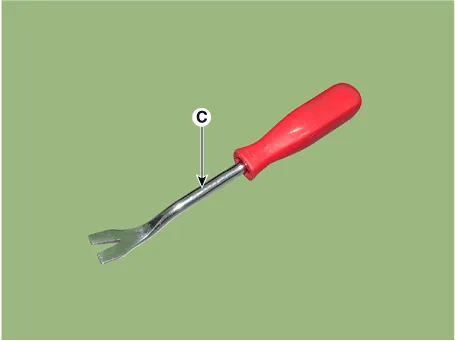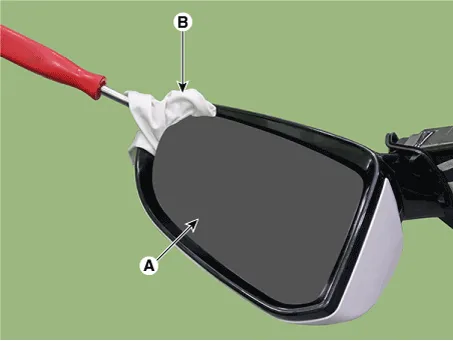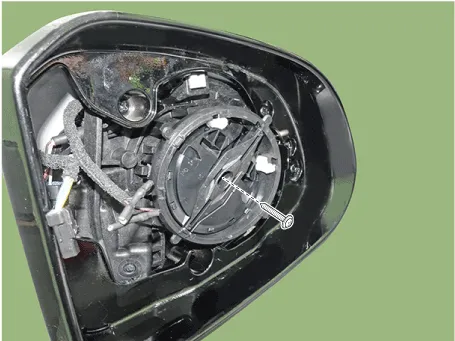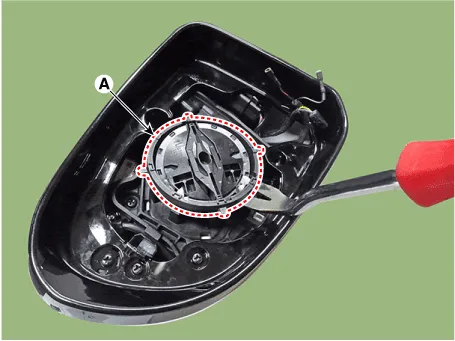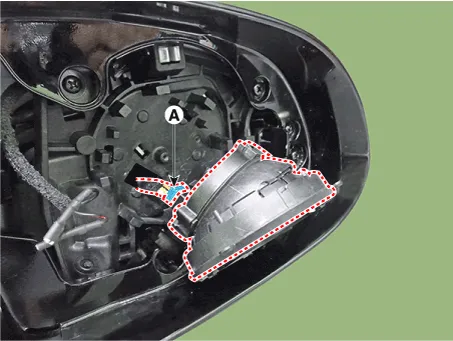Hyundai Santa Fe (TM): Power Door Mirrors / Power Door Mirror Actuator. Repair procedures
| Removal |
| 1. |
Disconnect (-) battery terminal.
|
| 2. |
Using a fastener remover (C), remove the mirror (A) as illustration
below.
|
| 3. |
Disconnect heat wire connectors (A) and then remove the mirror.
|
| 4. |
Remove the mirror actuator mounting screw.
|
| 5. |
Insert the fastener remover into the end of the mirror actuator (A)
and lift it up.
|
| 6. |
Disconnect the connector (A) and then remove the mirror actuator.
|
| Installation |
| 1. |
Connect the actuator connector and then install the mirror actuator.
|
| 2. |
Connect mirror heat wire connector and then install the mirror.
|
| 3. |
Connect (-) battery terminal then check if mirror works normally.
|
Removal 1. Disconnect the negative (-) battery terminal. 2. Remove the front left door trim.
Inspection 1. Disconnect the negative (-) battery terminal. 2. Remove the door trim.
Other information:
Hyundai Santa Fe (TM) 2019-2023 Service and Repair Manual: Description and operation
Description and operation The System may be limited when • The radar sensor or camera is blocked with a foreign object or debris.
Hyundai Santa Fe (TM) 2019-2023 Service and Repair Manual: ADAS Parking ECU (ADAS_PRK). Repair procedures
Removal 1. Disconnect the negative (-) battery terminal. 2. Remove the carash pad lower panel. (Refer to Body - "Crash Pad Lower Panel") 3. Remove the crash pad center panel.
Categories
- Manuals Home
- Hyundai Santa Fe Owners Manual
- Hyundai Santa Fe Service Manual
- Instrument cluster
- Engine Electrical System
- General Information
- New on site
- Most important about car

